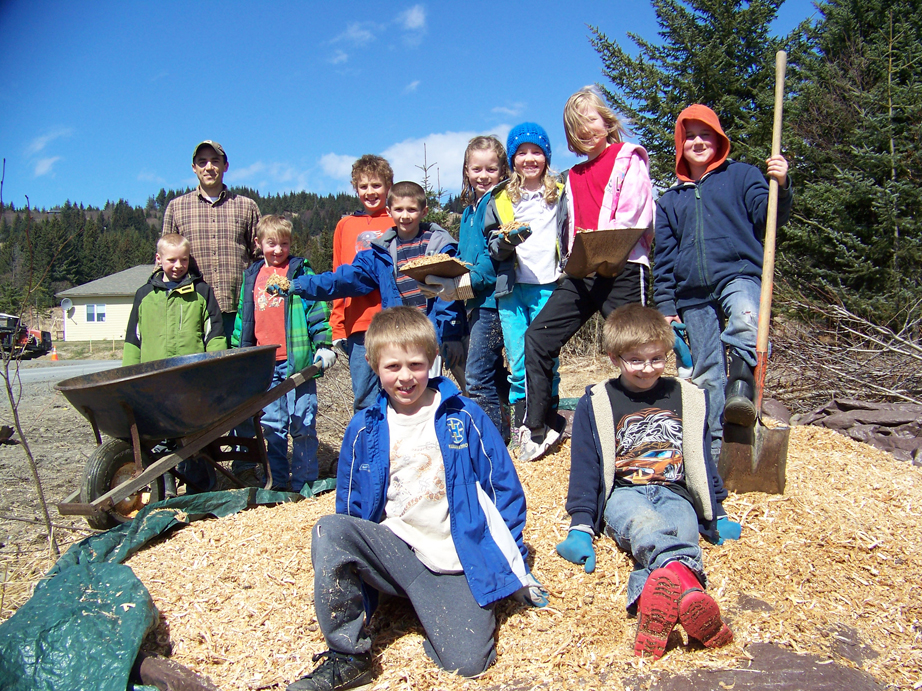No more pencils, no more books. Students at West Homer Elementary School spent the end of the academic year putting aside those implements of learning in exchange for shovels, rakes and wheelbarrows. The end result: a new trail and landscaping that have created an outdoor learning classroom designed for easily accessible environmental learning opportunities.
The project was funded by a grant from U.S. Fish and Wildlife Service for developing schoolyard habitats, and carried out by personnel from Homer Soil and Water Conservation District, WHES teachers and volunteers, and, most of all, the students.
“The goal of this project will be to develop an interpretative trail highlighting forest succession and native habitat and to install a natural amphitheater,” wrote WHES teacher Lyn Maslow in describing the trail-building effort. “Having the diverse natural habitats accessible to WHE students on a daily basis will increase their awareness and appreciation of the environment; the importance of preservation on natural habitats is very valuable in shaping their personal conservation values.”
While actual construction of the trail began May 6, the desire to develop it has been a multi-year process.
“Dave Brann, Al Poindexter and (WHES teacher) Susan Brass have been developing trail plans over the past 10 years to make this happen. The grant made it possible to complete that dream,” said Maslow.
Last fall, the student council and student body began brainstorming ideas for a schoolyard habitat. Over the winter, HSWCD district manager Tara Schmidt and Todd Schroeder, also from HSWCD, helped students convert their ideas into a design for a half-mile trail.
The first phase of the project included identifying how to involve students; clearing, grooming and widening an existing trail above the school; constructing a new trail to connect with the existing trial; improving the access trail off Soundview Avenue to meet ADA standards; and identifying and developing a natural outdoor amphitheater. Plants in the area also were identified, plant species researched and some plants relocated in the area to accommodate for the trail.
The original agreement with HSWCD was for $10,000, but Schmidt said, “It is difficult to put a dollar value on it at this point. It is a grant that requires a 50 percent match, so all the time that is being donated through the school, the parent volunteers and the community are part of the total cost.”
Small Potatoes Lumber donated material for the trail surface, with some materials also donated by HSWCD. Schmidt anticipates the first phase will cost $5,000.
The second and final part of the project will begin next fall. It includes developing interpretive stations and installation of student-constructed birdhouses and additional work on the trail.
“Between the rain and the ground still being frozen, progress has been a bit slower than anticipated,” said Schmidt of completing the first phase.
In spite of the weather, volunteers have continued to give their support. With HSWCD overseeing the work, classes of students have worked each day on the trail construction, transplanting and clearing brush, and creating animal habitats; John Miles, Steve Glasman, Deb Lowney and Brann also have “spent extra hours working with students on the trail,” said Maslow.
A ribbon-cutting ceremony on May 22 — the last day of the 2012-2013 school year — officially opened the trail.
McKibben Jackinsky can be reached at mckibben.jackinsky@homernews.com.


